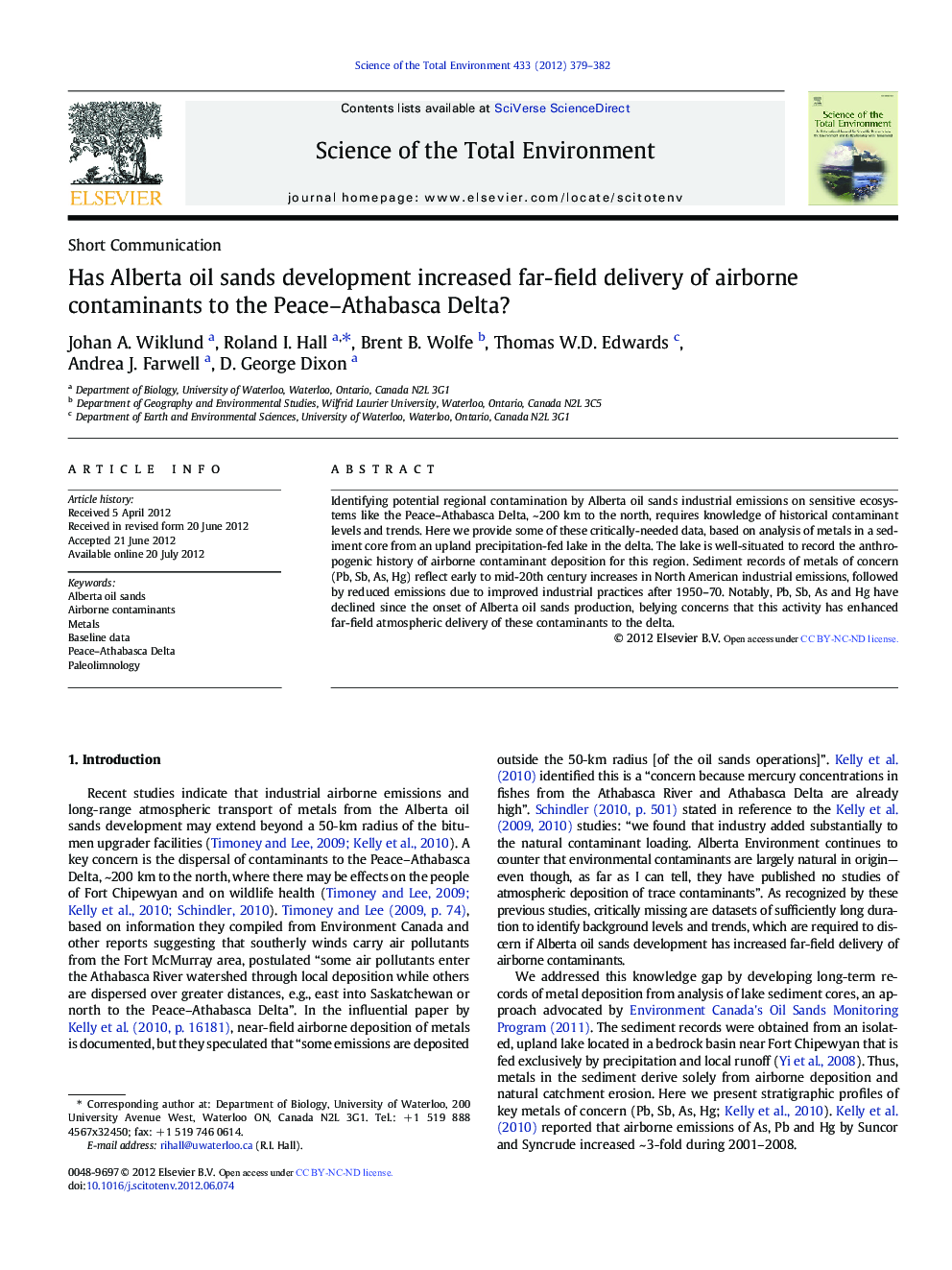| Article ID | Journal | Published Year | Pages | File Type |
|---|---|---|---|---|
| 6334112 | Science of The Total Environment | 2012 | 4 Pages |
Identifying potential regional contamination by Alberta oil sands industrial emissions on sensitive ecosystems like the Peace-Athabasca Delta, ~Â 200Â km to the north, requires knowledge of historical contaminant levels and trends. Here we provide some of these critically-needed data, based on analysis of metals in a sediment core from an upland precipitation-fed lake in the delta. The lake is well-situated to record the anthropogenic history of airborne contaminant deposition for this region. Sediment records of metals of concern (Pb, Sb, As, Hg) reflect early to mid-20th century increases in North American industrial emissions, followed by reduced emissions due to improved industrial practices after 1950-70. Notably, Pb, Sb, As and Hg have declined since the onset of Alberta oil sands production, belying concerns that this activity has enhanced far-field atmospheric delivery of these contaminants to the delta.
⺠Baseline information is needed to assess contamination by Alberta oil sands. ⺠Concerns center on the Peace-Athabasca Delta, 200 km to the north. ⺠We determined regional airborne metal deposition trends from lake sediments. ⺠Levels of Pb, As, Sb and Hg declined after onset of oil sands development. ⺠Oil sands emissions have not increased airborne metal contaminants in the delta.
